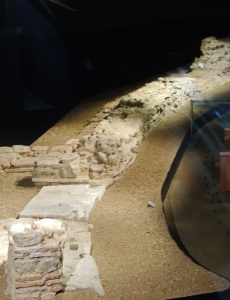
It had been long known that London had an amphitheatre but its location was unknown and it was not until the building of the Guidhall art gallery in 1988 that archaeologists discovered a semi-circular piece of wall linked to a corridor that could only be part of the missing amphitheatre.


Gladitorial games were first recorded in Rome in 264 BC and amphitheatres were built across the empire. The games reached their peak in the 1st and 2nd centuries. The London amphitheatre is believed to have been built around 75AD and refurbished about 40 years later. It probably held around 6000 people (The population of London at the time was 20-30,000). This is astounding as the modern equivalent would be a stadium seating 2-3 million people and this size relative to population speaks to the popularity of the games amongst all strata of society.




